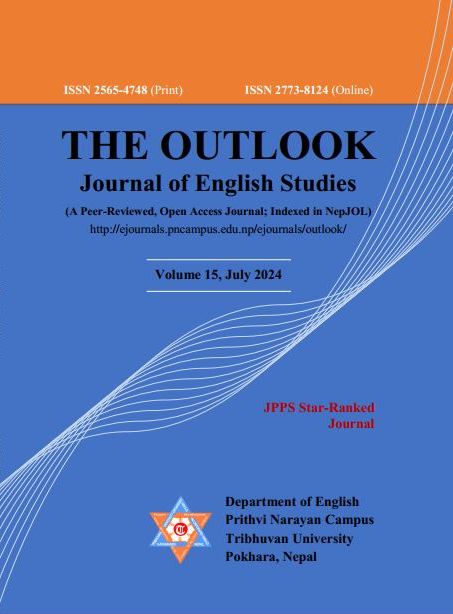Restored Behaviour and the Formation of Ethnic Identity: Critiquing the Rai Youths’ Sakela
DOI:
https://doi.org/10.3126/ojes.v15i1.67756Keywords:
Sakela, restored behaviour, ritual dance, ethnicity, performanceAbstract
This paper examines four YouTube videos on Sakela, a dance performance of the Rai community, in two major contexts: enormous shifts and deviations in the performances of youths and the signature of unique ethnic identity. Sakela in its primitive art form of Rai culture has a ritual connection with the transcendent forces for human health and agriculture. However, there have been many deviations and changes in its highly contextualized aesthetic manifestations like festive performances, ceremonial presentations, recreational activities, political demonstrations or urban, and diasporic discourses. Against this backdrop, the paper addresses the primary questions of why these performances recur in different forms and what role the restoration of behaviour plays in forming the ethnic identity. The study approaches these questions with the objectives of analyzing the restored behaviour in the Rai youths’ Sakela and identifying the performances as preserving the signature of ethnic identity. The examination of primary data in the qualitative study includes the analysis of selected YouTube video contents comprising Sakela performances, using the content analysis method. Primary data are selected to quantify the phenomena of Rai youths’ restored behaviours in Sakela dance, their cultural meanings, and their relationships to ethnic identity. To validate the collected data, the study draws theoretical insights from Richard Schechner’s theory of restored behaviour. Schechner's theory promulgates that people are always performing anew out of old in a continual rehearsal. The behaviour is replicated and thus performances gradually emerge. Such behaviors ranging from small gestures to ritualistic performances become part of lives but they are no longer sticking to the original source. Pursuant to this conceptual framework, the paper argues that Rai youths’ Sakela demonstrates the signs of restored behaviour, the symbolic and coded aspects of their culture. It also posits that embodied ethnic traits evident in the performance ensure the persistence of membership in their community. Thus, Sakela continues to be the signature of ethnic belief system and unique identity in the lives of Rai youths. In all its aspects of the repetition of never the same, the embodiment of ethnic identity keeps on sticking to youths’ Sakela.
Downloads
Downloads
Published
How to Cite
Issue
Section
License

This work is licensed under a Creative Commons Attribution-NonCommercial 4.0 International License.
This license enables reusers to distribute, remix, adapt, and build upon the material in any medium or format for noncommercial purposes only, and only so long as attribution is given to the creator.

